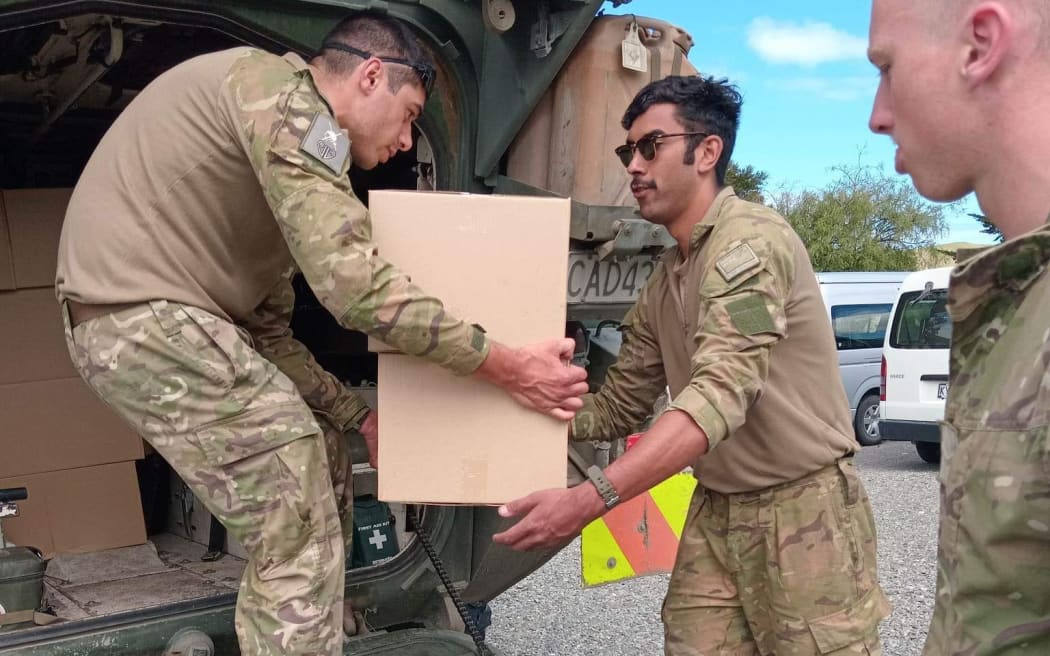Communities on the East Coast say they are sick of band-aid fixes and being praised for their resilience. But they know, during a natural disaster, self-sufficiency can be the key to survival.
Tolaga Bay local and Civil Defence leader Nori Parata said it formed the basis of their disaster planning.
“A lot of work and thinking has been going into safety plans with whānau to build the resilience to rely on, as much as you can, yourself and your resources and those immediately around you.”
The ability to communicate remained key. With the cell network down and no internet, Parata said Ngāti Porou flew in four Starlinks – that is, satellite internet – for Civil Defence use, meaning locals could make contact with loved ones.
Parata said it made such a difference for their wellbeing “just seeing them leave the Civil Defence base a little lighter, even though their situations were often still dire”.
Those Starlinks remained on-hand for next time.
Parata said communities did want to be self-sufficient, but storm after storm had taken its toll.
“We got to the point where we were actually sick of people saying on TV, ‘But they’re resilient,’ and whatnot. Like anything, it has its cap.”
Gisborne District Council civil defence controller Ben Green said the emergency response sector just was not resourced to provide everything communities needed.
But even before Gabrielle, the district council had begun a project to place strategic caches of supplies up the coast for a different kind of disaster – earthquakes.
The first tranche included nine shipping containers, with backup generators, communications equipment, shelters, stretchers, water treatment units, medical supplies and enough food for 100 days.
Of course, they will come in handy during bad weather, too.
Council staff were travelling the region demonstrating how to use this equipment with the Tai Rāwhiti Emergency Management Roadshow. It has visited Tokomaru Bay, Te Araroa and Uawa, and will soon be stopping in at Manutuke and Gisborne.
“Knowing that they’ve got that kit means that they’ve got a headstart in terms of the national or regional response,” Green said.
The recent ministerial inquiry into land use recommended back-up drinking water, or a tank subsidy for all residents, as well as self-sufficient electricity for small isolated communities.
Lines company Firstlight Network, along with supply company Base Power, did just that. In March, they trialled a system of solar panels and a back-up generator at a rural property near Tarndale.
For years, bad weather had damaged the 16km line which serviced only one property. Now, the residents can live off-grid.
Firstlight general manager Jarred Moroney said it was a win for both sides.
“It cuts down risk around trying to repair it. It means the consumer’s got a more consistent power supply… and we can focus our attention on where we have higher customer numbers.”
Moroney said the customer paid for diesel for the backup generator, and Firstlight owned and maintained the equipment.
Photo: Supplied/ Uawa Civil Defence
It could certainly be an option for other similar properties, he said, but when it came to whole communities, they needed a variety of solutions – including the traditional network of powerlines.
The amount of electricity needed to service a whole town was just too high to be provided by a solar setup such as the one in Tarndale.
“In lots of cases where the population is dense, we can get the electricity in there easy. The very remote places, yes it might be a standalone power system, in other places it might be some backup generation – whether that’s diesel, solar [or] batteries.”
As with most things, it was having a range of options that provided the most resilience.
Source: rnz




